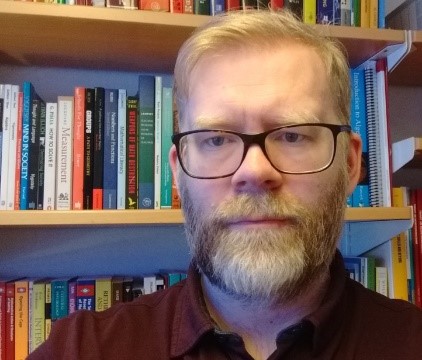Verksted 33 (V 33)
Participants will learn to create dynamic computer graphics in the Processing computer language and to relate such programming to mathematical concepts and themes. The potential of dynamic computer graphics programming for mathematics learning will be explored and pedagogical issues discussed. A course I have taught on the upper-secondary level (videregående) called “Computer games mathematics” will be presented and discussed.
A computer program is a particular representation of an algorithm and an algorithm is a mathematical object. Therefore, computer programming is essentially a mathematical activity. In addition to this, computer graphics are created through the use of multiple mathematical concepts and representations. The computer screen is essentially a coordinate system, and motion is organized trough vectors expressing velocity and acceleration. Various phenomena are modelled with mathematical functions such as the trigonometric functions.
The Processing language was designed to be easy to learn and it is geared towards creating visual, interactive media. One of the ideas behind using it for teaching programming is that students find it satisfying to make something appear on their screen within moments of using the software. This is in contrast with using more traditional languages where considerable time may have to be spent on other issues before getting to the creation of interesting and beautiful graphics.
Onsdag 27. november kl. 10.30-11.50
Target group: Videregående, Ungdomstrinn.
Max number of participants: 22-26.
 Ingólfur Gíslason. Adjunct professor at the University of Iceland and a doctoral candidate in mathematics education and a former upper-secondary (videregående skole) mathematics teacher.
Ingólfur Gíslason. Adjunct professor at the University of Iceland and a doctoral candidate in mathematics education and a former upper-secondary (videregående skole) mathematics teacher.